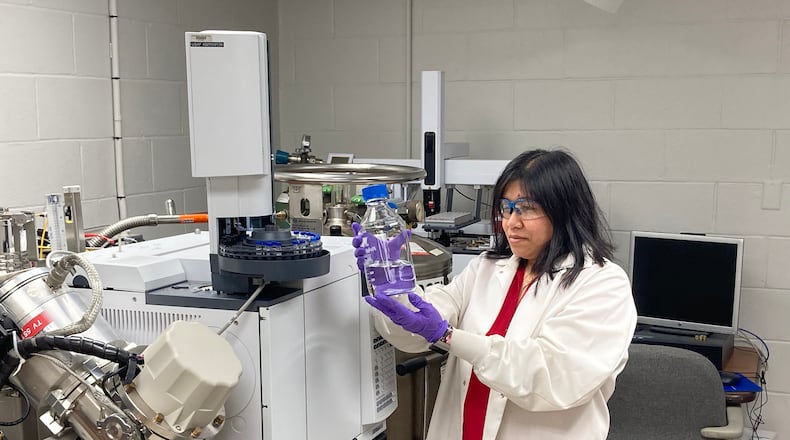So much so that a global organization that develops governing principles in manufacturing, research and other technical processes — the American Society of Testing and Materials, normally referred to as “ASTM International” — just gave a thumbs up to the use of synthetic oil made from city trash, after testing and support by the University of Dayton Research Institute (UDRI).
ASTM International has approved the use of a synthetic oil derived from municipal garbage in the making of jet fuel at petroleum refineries, UDRI announced Monday.
MORE: Protecting NASIC at Wright-Patterson will require constant vigilance, advocates say
UD and others call it “syncrude.”
UDRI was also involved in ASTM’s approval of a new algae-based biofuel developed in Japan.
“Approval by ASTM effectively greenlights the use of the new fuels in commercial and military aviation, because it signals to the industry that they meet all testing criteria for certification as viable and safe products,” Steve Zabarnick, division head for fuels and combustion at UDRI, said in a statement from the institute.
The approval represents a go-ahead to a California company, Fulcrum BioEnergy, in bringing the fuel to market, UDRI said.
In fact, Fulcrum plans to begin mass production of the fuel later this year in a plant outside Reno, Nevada.
The plant is already being called the world’s first “garbage-to-jet-fuel” plant,” and UD said the plant will process 175,000 tons of municipal solid waste each year to create 11 million gallons of synthetic crude oil, which will then be delivered to Findlay, Ohio-based Marathon Petroleum for use in transportation fuels.
UDRI said it was involved in the approval process of all seven alternative fuels now available for aviation, beginning with the first alternative fuel and petroleum blend approved by ASTM in 2009.
To reach this step, UDRI and fellow researchers had to satisfy ASTM’s technical committee on jet fuel, which is made up of hundreds of volunteers representing oil companies, airlines, engine and aircraft manufacturers, the military and others.
RELATED: UDRI sets a new record
The process involves taking household trash—contaminated cardboard and paper, textiles and other carbon-rich waste that remains after materials such as glass, dirt and rocks are removed — and then turning it into “a wax which looks very similar to petroleum, but contains none of the sulfur, metals or other contaminants that can be found in petroleum,” according to UDRI’s description of the process.
“It’s a very clean product with a number of environmental benefits,” said Bruno Miller, managing director of fuels and regulatory affairs at Fulcrum BioEnergy.
“Fuels made from a blend of petroleum and synthetic crude are cleaner and will help transportation companies decarbonize,” Miller added. “And our process will help mitigate landfill issues by making a useful product out of something normally buried in a hole in the ground.”
Miller had high praise for UDRI.
“Accuracy of testing data is critical for approval, and the research institute has developed an exceptional level of trust and respect within the fuels industry,” he said, in a quote included in UDRI’s statement.
About the Author



